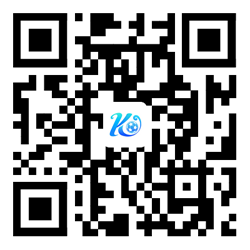皇冠现金网官网

皇冠现金网官方网站
请关闭VPN或使用香港代理
皇冠现金网手机应用 实时下载二维码


皇冠现金网手机应用安装版

皇冠现金网(中文)平台官方网站
皇冠现金网中文官网提供大陆地区最新皇冠现金网/皇冠现金网应用可连通域名地址
关于皇冠现金网
皇冠现金网是一家知名的在线娱乐平台,以其丰富多样的游戏选择而闻名。其平台提供了从传统赌场游戏如扑克、二十一点到各种创新的电子游戏,满足了不同玩家的需求。网站界面设计现代,用户体验友好,使玩家能够轻松导航并享受游戏。
皇冠现金网以高标准的安全措施保障玩家的信息和资金安全。通过采用先进的加密技术和严格的身份验证流程,平台确保了每一位用户的个人资料和交易的安全性。同时,网站还提供了多种存取款方式,方便用户进行资金管理。
为了提升玩家的娱乐体验,皇冠现金网定期举办各类促销活动和赛事。这些活动不仅增加了游戏的趣味性,还提供了丰厚的奖金和奖励,使玩家能够在游戏中获得更多的乐趣和收益。
平台还拥有专业的客服团队,提供24小时在线支持。无论是技术问题还是账户管理,玩家都可以随时获得帮助。客服人员的高效和专业性为玩家提供了额外的安心保障。
皇冠现金网以其卓越的游戏品质、安全性和客户服务赢得了广泛的好评,是广大玩家喜爱的娱乐平台之一。平台提供了多种工具和资源,帮助玩家设定游戏时间和消费限额,并提供专业的支持和咨询服务,帮助有需要的玩家寻求帮助。
皇冠现金网不仅在游戏种类和服务上具有优势,还注重用户反馈和体验。平台定期收集玩家的意见和建议,持续优化和升级游戏内容和功能。这种以玩家为中心的运营理念,使得皇冠现金网能够与时俱进,始终保持在行业的前沿地位。无论是新手还是资深玩家,都能在这里找到自己喜爱的游戏,并享受到不断提升的游戏体验。
皇冠现金网还致力于推广负责任的博彩理念,确保玩家在享受游戏乐趣的同时,不至于陷入赌博困境。这种负责任的态度不仅保护了玩家的利益,也提升了平台的信誉和公信力,使其成为一个值得信赖的娱乐平台。
皇冠现金网应用近期版本更新
2024年8月15日 版本10.1.0
2. 改进用户反馈系统,增加更多反馈选项。
3. 优化界面加载速度,减少等待时间。
2024年7月30日 版本10.0.5
2. 增加多样化投注选项,提升用户体验。
2024年6月25日 版本10.0.0
2. 引入AI推荐系统,为用户提供个性化投注建议。
3. 优化应用性能,提升总体流畅性。
2024年5月15日 版本9.9.5
2. 增强系统稳定性和兼容性。
2024年4月10日 版本9.9.0
2. 改进投注界面,简化操作流程。
2024年3月5日 版本9.8.5
2. 增强数据保护,提升隐私安全。
2024年2月20日 版本9.8.0
2. 优化用户账户管理界面。
2024年1月15日 版本9.7.1
2. 修复若干已知问题,提高应用稳定性。
2023年12月25日 版本9.6.0
2. 改善用户界面,提升操作便捷性。
2023年11月10日 版本9.5.1
2. 改进缓存处理,减少加载时间。
2023年10月5日 版本9.5.0
2. 改进用户隐私保护措施,提升数据安全。
2023年9月20日 版本9.4.0
2. 修复部分已知问题,提高系统稳定性。
2023年8月15日 版本9.3.0
2. 改善应用内导航,简化操作流程。
2023年7月10日 版本9.2.0
2. 增强应用加载速度,减少等待时间。
2023年6月5日 版本9.1.0
2. 增加赛事预测功能,提供专业分析。
2023年5月1日 版本9.0.0
2. 引入新的支付方式,增加用户选择。
2023年4月20日 版本8.9.5
2. 修复已知漏洞,提高应用安全性。
2023年3月15日 版本8.9.0
2. 优化赛事直播流畅性,减少卡顿现象。
2023年2月10日 版本8.8.0
2. 增强数据同步功能,提高数据准确性。
2023年1月5日 版本8.7.0
2. 修复若干小问题,提升用户体验。